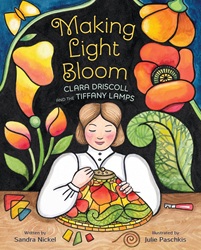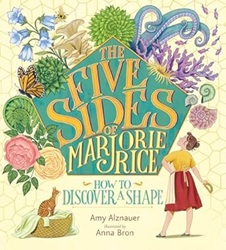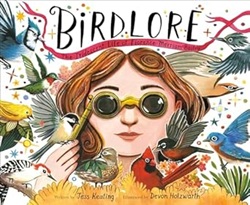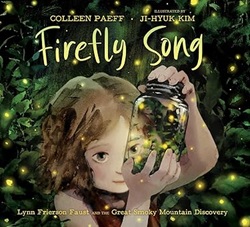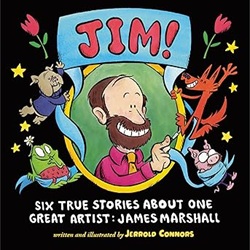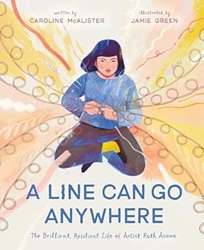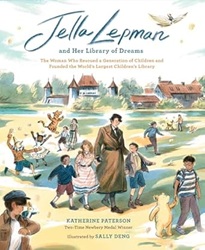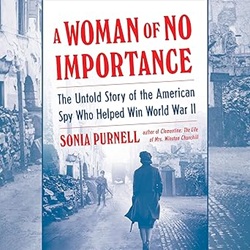Review of Making Light Bloom, written by Sandra Nickel, illustrated by Julie Paschkis
Clara Driscoll and the Tiffany Lamps
written by Sandra Nickel
illustrated by Julie Paschkis
Peachtree, 2025. 32 pages.
Review written November 18, 2025, from a library book.
Starred Review
This is another picture book biography that tells us about something a woman did that men got the credit for. (Pass Go and Collect $200, by Tanya Lee Stone, about the woman who invented the Monopoly game comes to mind, but I think I have reviewed others.)
In this case, the woman is Clara Driscoll. She grew up in the country loving gardens and flowers and art. As an adult, she moved to New York City to do more with her art. She got a job at the company of the glassmaker Louis C. Tiffany.
She joined a team of artists who selected and cut glass to create pictures and shapes in windows.
Clara showed great talent, so she was put in charge of a workshop staffed only by women.
She hired both experienced artists and untrained immigrants. And as she and her new Tiffany girls worked, Clara inspired them all by reading poetry about nature.
They continued to make glass for windows until Clara had a moment of inspiration.
Though her work kept her busy, Clara missed the house on the hill and its gardens.
One day she had an idea of how to bring their bright beauty to the city. She sent her sisters a letter and asked for yellow butterflies and wild primroses.
Once they arrived, Clara sketched them. But not as a window, with light coming from behind. As a lamp, with light coming from within.
She worked with the Tiffany girls to cut the pieces and with the craftsmen to form the glass into a lampshade. It took so much time and effort to make, one of the managers told Clara not to make any more.
But then, Louis saw what Clara had created and said it was “the most interesting lamp in the place.” He asked her to make another to display at the World’s Fair in Paris.
When the lamp won a bronze medal at the World’s Fair, she was asked to make more lamps and windows filled with gardens and landscapes and flowers. And Clara was put in charge of lamp-making.
“Tiffany lamps” became wildly popular and very valuable. Because Tiffany’s name was on them, no one knew that they were Clara’s design – until a bundle of her letters to her sisters and mother was discovered after both she and Louis Tiffany had died.
The art in this wonderful book is done in a style that matches the lamps Clara created, with dark outlines around simple shapes, as if made of glass themselves.
SandraNickel.com
JuliePaschkis.com
PeachtreeBooks.com
Find this review on Sonderbooks at: www.sonderbooks.com/Childrens_Nonfiction/making_light_bloom.html
Disclosure: I am an Amazon Affiliate, and will earn a small percentage if you order a book on Amazon after clicking through from my site.
Disclaimer: I am a professional librarian, but the views expressed are solely my own, and in no way represent the official views of my employer or of any committee or group of which I am part.
Subscribe for more reviews and talk about books.
Join the conversation: What did you think of this book?
